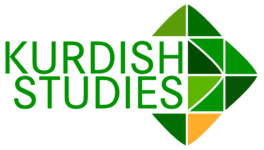Editorial
Utrecht University
Abstract
Almost a century ago, Memduh Selim wrote in the Kurdish magazine Jîn, which appeared in Istanbul, about the importance of festivals and commemorations for national awareness, and he urged the Kurds to follow the example of other nations and cultivate their national days. The mobilising potential of such celebrations and the various symbols associated with them has been amply proven in the case of the Kurds. As the major festivals to be celebrated, Memduh Bey mentioned Kurdish New Year (sersal) and the day of Kawa the Blacksmith, the hero who slew the tyrannical king Zahhak. He believed that the latter day was to be celebrated towards the end of summer. Later generations joined the symbol of Kawa’s uprising to the spring festival, making Newroz/Nowruz a festival of rebirth, resistance and liberation. Although other Iranian and Turkic peoples also celebrate Nowruz, the day has acquired a distinct symbolic meaning for the Kurds. The festival and the myth associated with it are shared by Kurds of all countries; it has become a core aspect of Kurdish identity as well as a symbol of the Kurdish struggle against oppression.
